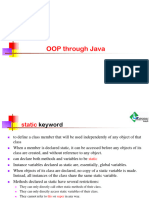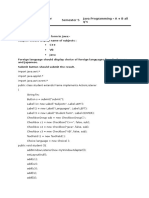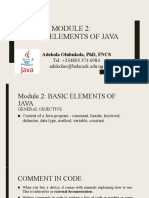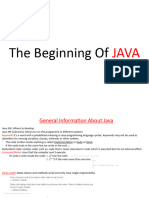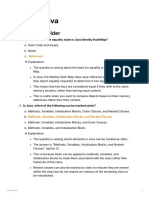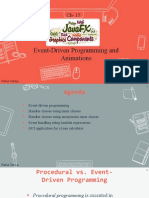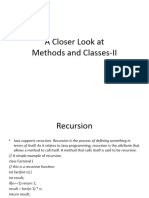0% found this document useful (0 votes)
29 views65 pagesVB Lecture 5
The document provides a comprehensive overview of Object-Oriented Programming (OOP) concepts, focusing on anonymous inner classes and Java lambda expressions. It explains the use cases, advantages, and limitations of anonymous inner classes, as well as the syntax and application of lambda expressions in Java. Additionally, it covers event-driven programming concepts, including various event types and listener interfaces in Java Swing, along with practical examples and questions for coding exercises.
Uploaded by
ayabahaaCopyright
© © All Rights Reserved
We take content rights seriously. If you suspect this is your content, claim it here.
Available Formats
Download as PDF, TXT or read online on Scribd
0% found this document useful (0 votes)
29 views65 pagesVB Lecture 5
The document provides a comprehensive overview of Object-Oriented Programming (OOP) concepts, focusing on anonymous inner classes and Java lambda expressions. It explains the use cases, advantages, and limitations of anonymous inner classes, as well as the syntax and application of lambda expressions in Java. Additionally, it covers event-driven programming concepts, including various event types and listener interfaces in Java Swing, along with practical examples and questions for coding exercises.
Uploaded by
ayabahaaCopyright
© © All Rights Reserved
We take content rights seriously. If you suspect this is your content, claim it here.
Available Formats
Download as PDF, TXT or read online on Scribd
/ 65







